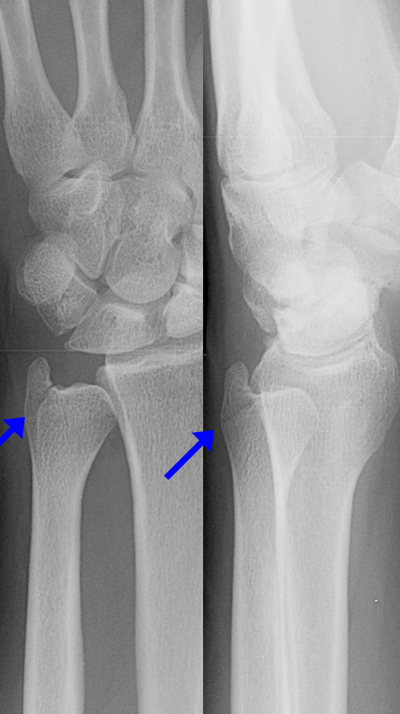Wrist Case 3 History/Physical Exam
Ulnar Styloid Fractures
History and Physical Exam
The mechanism usually is forced radial deviation with dorsiflexion, sometimes with a rotary component, typically after a fall onto the outstretched hand, similar to distal radius fractures (these two injuries often occur together).
Patients with ulnar styloid fractures typically complain of pain on the ulnar side of the wrist and may also hear a click or feel a locking sensation with pronation or supination, especially if there is ligamentous injury.
Patients will have tenderness to palpation over the distal ulna, worse with radial deviation of the hand. They often have limited ROM and hand grasp if the fracture is type II. Obvious deformity of the wrist suggests associated distal radial injury.
Special attention should be paid to examining for instability of the DRUJ. Findings suggestive of DRUJ instability are:
- Pain with pronation/supination of the forearm (holding the wrist, not the hand)
- Pain with lateral compression of radius against ulna
- "Piano key" test—with the patient's hand fully pronated, stabilize the distal radius with one hand. With the other, press down on the ulnar head. If the ulna deviates volarly with little resistance, like pressing a piano key, DRUJ instability exists.
